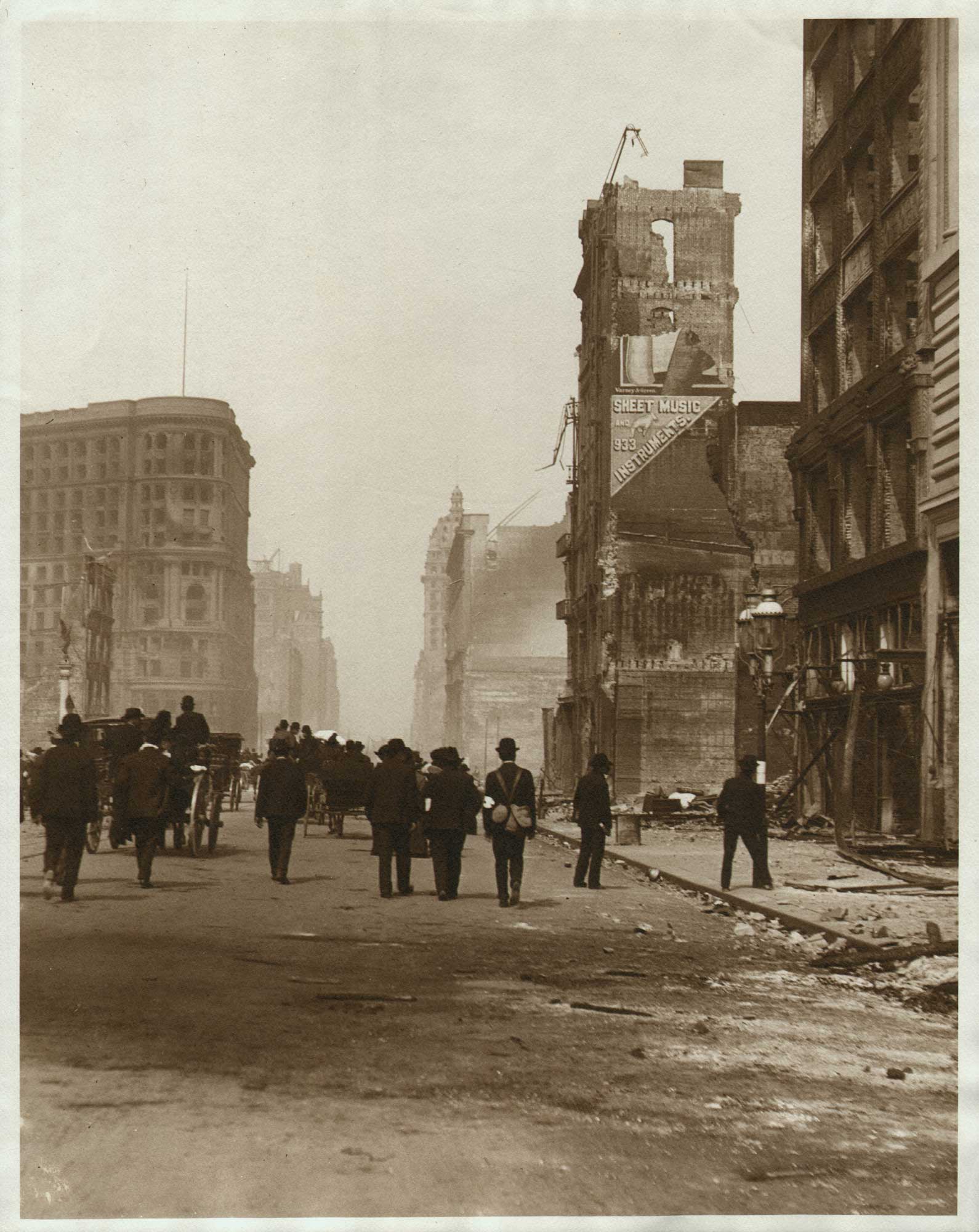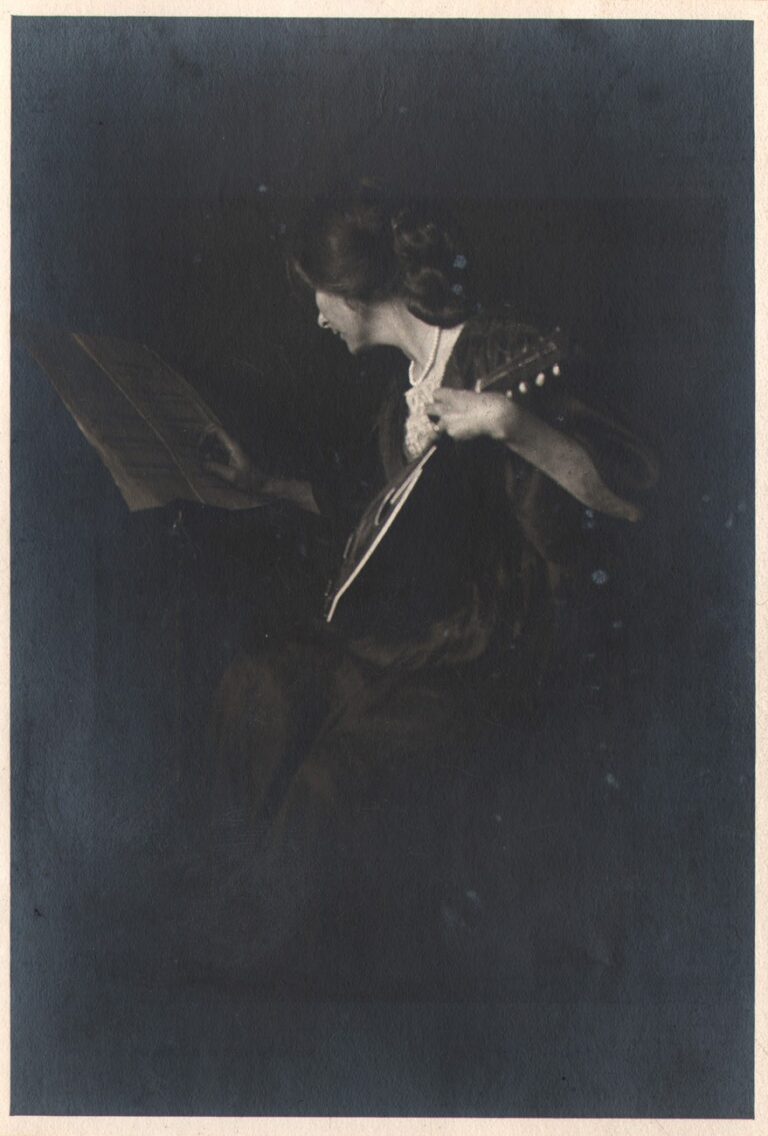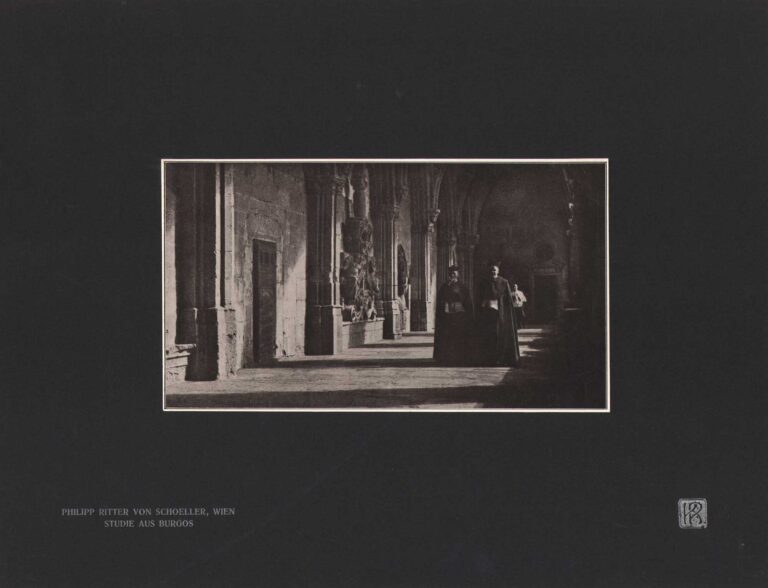
Market Street | 1906 Great San Francisco Earthquake
The great San Francisco Earthquake of 1906 struck in the early morning hours of April 18, 1906. Along with the ensuing fire that burned for many days, over 3000 people were killed and more than 80% of the city was destroyed- the deadliest earthquake in the history of the United States.
At the time of the event, Sigismund Blumann was living with his parents on Army Street in the city. (now renamed Cesar Chavez Street) “He volunteered to help the recovery and, with his official permits, got through the lines and took a number of photographs.” (1.) Fortunately, when the quake struck, “Blumann owned his own, more sophisticated camera, which he used to document the quake’s aftermath. According to his family, Blumann wished to get so close to the action that he volunteered in rescue efforts in order to get behind police lines. Once there he photographed hundreds of destroyed buildings, blocks, and streets. Only a small number of 5 x 7-inch prints of these subjects remain, however, for Blumann later destroyed most of them, fearing that they might be used by insurance companies as evidence against property owners.” (2.)
This scene, taken in the aftermath, shows the back of pedestrians as they walk down and stare at the destruction along Market Street.
And perhaps because he was also a professional musician at the time, (3.) he stopped at this section of Market to record for posterity a scene including a detail showing the remains of a painted advertising sign for “Sheet Music and Instruments”, with a hand pointing down to 933 Market. The 1905 city directory for San Francisco lists the Zeno Mauvais Music Co. at this address- a music publisher that also sold “all kinds of music instruments” as well as Olympia music boxes. Next door, at 931 Market, was one of the city’s locations for the Wiley B. Allen Co. – a major west coast music store that sold everything musical including pianos, organs, and the new fangled Victor Talking Machine Company’s phonograph that debuted five years previously.
1. Biography: Sigismund Blumann (1872-1956) by Thomas High. 2. “Sigismund Blumann, California Editor and Photographer,” by Christian A. Peterson, in History of Photography, vol. 26, no. 1. (Spring 2002). p. 54. 3. Ibid: p. 53: “He developed his talents sufficiently to perform in a public concert at age sixteen but in order to make a living started teaching music a few years later, in 1890. Blumann continued to teach and perform for the next thirty years, enjoying a full career in music before turning to photography. In 1894 he was the musical director of both the California School of Elocution and Oratory and a musical production that travelled out of state. Ten years later he helped form a ‘music bureau’ that booked bands and represented a music publisher. In the 1910s, when he was at the height of his musical career, he led his own orchestra, which played at venues such as the 1916 annual banquet of the Fire Underwriters Association of the Pacific.”



